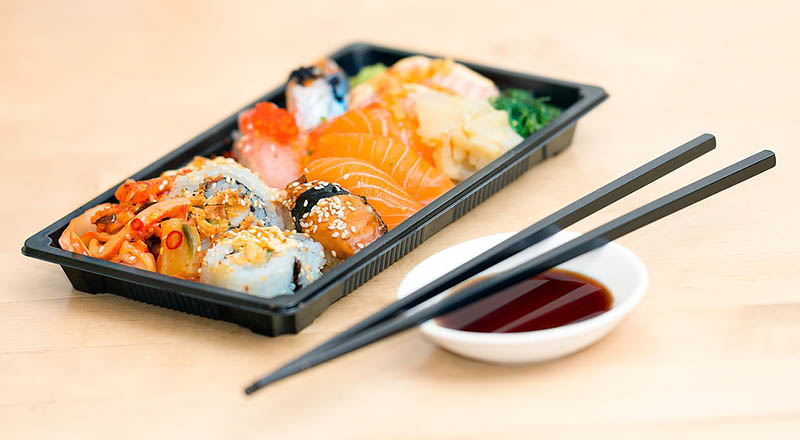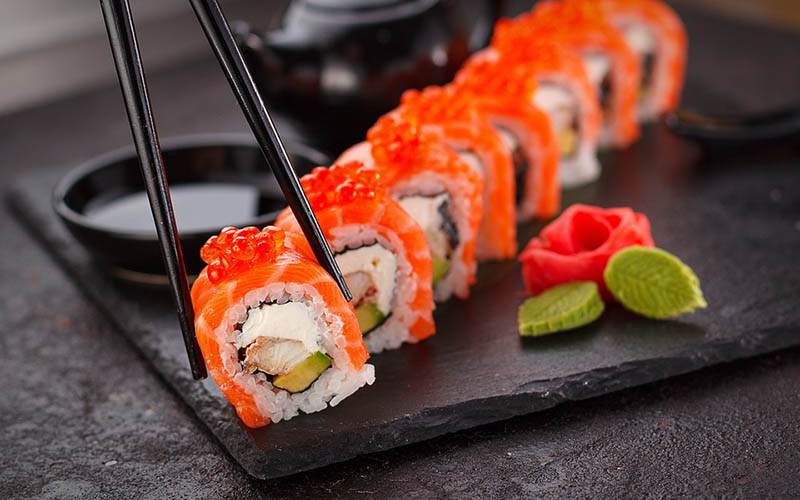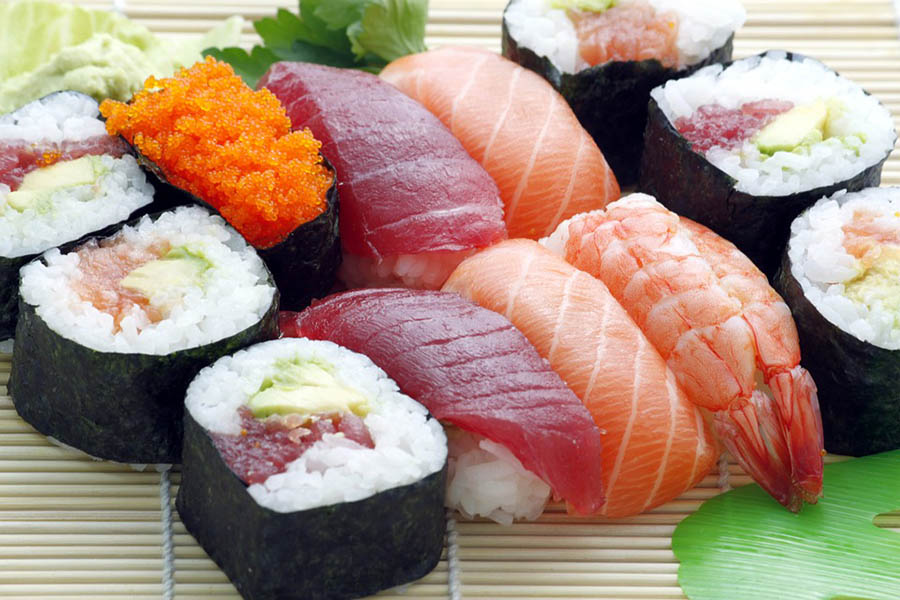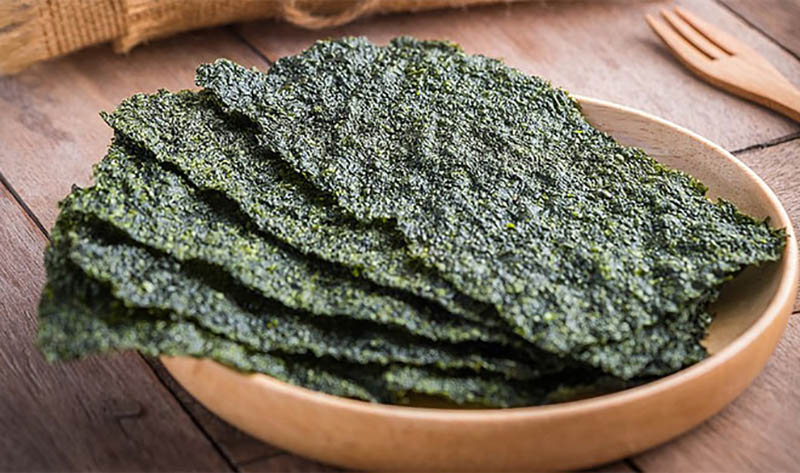- Wasabi is not a flavor additive. Japanese horseradish is served with sushi in order to kill germs that may be in raw fish. Thus, it makes the dish not dangerous to eat.
- The popular Philadelphia and California rolls were invented in the USA, not in Japan.
- Nori has been scraped from the bottom of boats in the past. In the modern world, this may seem rather strange, but previously, nori was carefully extracted from the bottom of a boat that arrived after sailing. Nowadays, this method is a thing of the past because people have learned to grow nori artificially.
- The wasabi you are offered in many restaurants is not authentic at all. In fact, this is actually horseradish and mustard powder that has been colored green in order to look like the real thing. This is typically done because the plant is very pricey. Many restaurants that offer it charge extra to offset the costs.
- In Japan, sushi is eaten with your hands. Rolls are eaten with chopsticks, and sushi is traditionally eaten only with hands.

- About 80% of the bluefin tuna catch is used to make sushi.
- Due to the excessive catch of bluefin tuna in Japanese territorial waters, restrictions were even imposed on catching this fish.
- California Roll was the first cooked with rice inside out.
- Sushi containing fresh fish should be eaten within 3-4 hours after cooking.
- The longest roll in the world was made in the city of Yekaterinburg, Russia. Its length is more than 6500 ft (2.5 km).
- The sushi rice was once considered trash. When sushi was invented, the rice was wrapped around the fish in order to give it a unique flavor, extend its life and protect it from insects. Once it was time to eat the fish, the rice was discarded. Apparently, someone thought better of wasting so much of the grain that they adapted the recipe to incorporate the discarded rice instead of aged and fermented fish and rice, fresh seafood is wrapped in rice that has been prepared with vinegar.
- According to the Oxford English Dictionary, the earliest mention of sushi in English can be found in 1893 in a book called “Japanese Interior”.
- Contrary to popular belief, sushi was invented not in Japan, but in the rice-growing region of Southeast Asia more than two thousand years ago in the Mekong River Valley. The recipe then spread to other areas, eventually appearing in Japan around the VIII century.
- Seaweed is not the only maki wrapper. While seaweed is the most popular ingredient used as a wrap for sushi, there are other things that can be used as well. Egg, thinly sliced cucumber, semi-firm avocado, and soy paper are all alternatives. Some people prefer these alternatives because they aren’t fans of seaweed.
- The word “sushi” means “it’s sour.” This reflects the origins of the recipe of this dish: the first Japanese sushi was made from salted fish soaked in vinegar.

- There are about 4,000 sushi restaurants in the United States and about 45.000 of them in Japan. American sushi bars generate $2 billion in annual revenue.
- The bluefin tuna population has declined by more than 96% due to the growing demand for sushi.
- While soy sauce is served with sushi, the rice is not meant to be dipped. It is frowned upon if the rice becomes drenched and starts to fall apart.
- Traditionally, sushi should clearly reflect the current season. Consequently, many sushi chefs in Japan and America avoid using off-season captive-bred fish.
- An earthquake made sushi more popular. Sushi was traditionally seen as street food and many vendors could not afford to open brick-and-mortar locations. This all changed after there was an earthquake in 1923. The prices of property dipped so low that it was suddenly attainable to purchase a restaurant and serve sushi there. Now it is far more common to see this being served in an eatery than to see it served on the side of the road.
- The oldest type of sushi in Japan is the stinkiest sushi in the world. Near Lake Biwa (Japan’s largest lake), a kind of narezushi is still being served. This fermented local delicacy is known as funazushi, which is said to taste similar to a pungent cheese. Unlike modern sushi, narezushi was made with freshwater fish, loach, and eel. The process follows the old-school, pre-refrigeration method of sushi making. The filleted fish is packed with salt, layered in a wooden tub, weighed down with 70 pounds (30kg) stones, and left to cure for two years. Then the fish is thoroughly rinsed, dried in the sun for a day, then fermented in vinegared rice for another year before it is eaten.
- Plastic grass in takeout sushi has historical roots. Putting leaves between foods such as fish and rice is a centuries-old practice of Japanese cuisine.
- Initially, rice was not a part of sushi. Although today you can’t imagine sushi without rice, originally rice was only never eaten and only used to ferment the fish.
- There are six types of sushi: Chirashizushi, Inarizushi, Makizushi (what we call rolls), Narezushi, Nigirizushi, and Oshizushi.
- Sushi has plenty of health benefits. If you’re curious about sushi’s nutrition facts, you’ll be happy to know that sushi is literally swimming in health benefits. The most obvious nutrient is omega-3 fatty acids, a heart-healthy fat, that most fish and seafood have. Sushi is also mostly low in fat and high in protein. Nori, which is found in many sushi, is rich in vitamins A, B-6, and C, as well as iodine.



